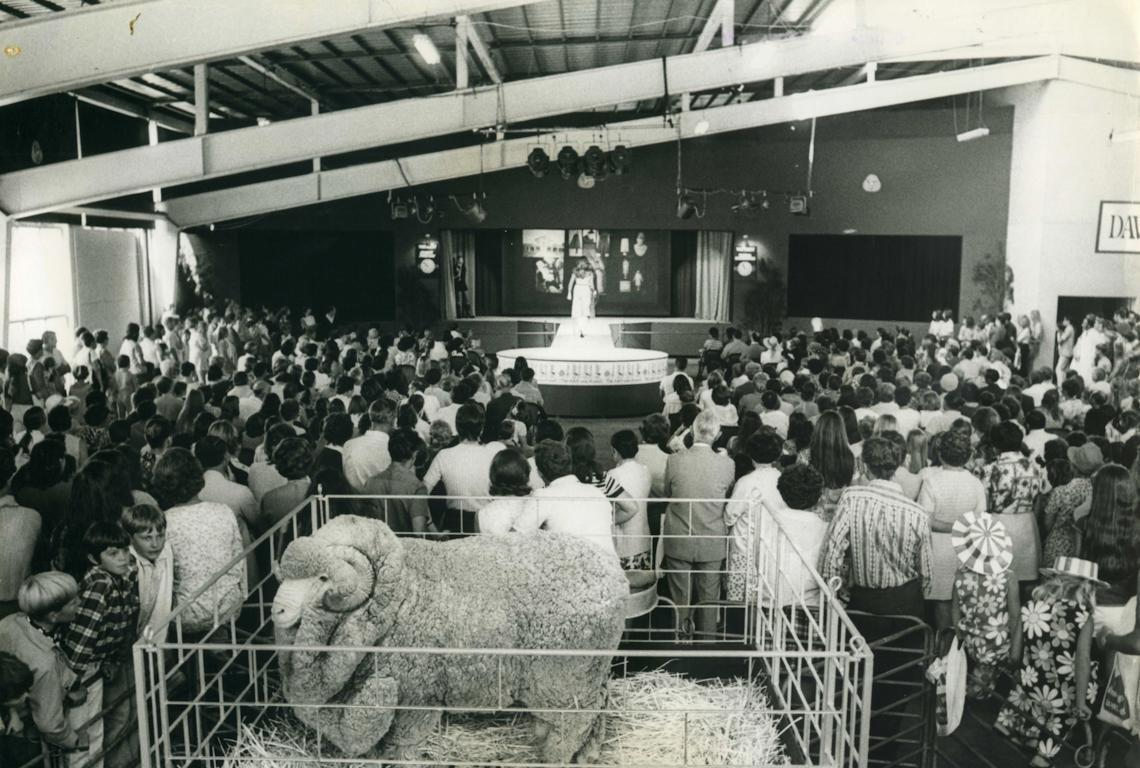Wool Fashion Heritage Highlight

The Stylish Ways of Wool at the RES
Wool, either on the sheep’s back or in the form of fleece or fibre, has been part of RAS proceedings since the Society’s first show at Parramatta in October 1823, when prizes were awarded for the best merino ewes and rams.
The staging of the annual Sheep Show in Sydney was taken over by the NSW Sheepbreeders Association in 1895 and did not return permanently to the Sydney Royal show until 1976, but even during that time, displays of wool and woollen products remained front and centre.
Being water repellent, flame resistant, durable and absorbent, wool had long been used for practical clothing like military uniforms and workwear, but in the 1920s it underwent a style makeover when world famous fashion designer Coco Chanel popularised dresses made from fine wool jersey. Superfine merino wool also found its way into everyday underwear and swimsuits and from that point on, wool became a fashion staple.
During the 1930s and 40s displays of wool products and wool inspired fashion parades during the Easter Show, became a regular feature. By 1963 the Australian Wool Bureau had employed the services of the well-known Wyatt sisters to stage daily fashion parades in the showground’s Wool Pavilion.
The Australian Wool Board quickly saw the benefits of using fashion parades at events like agricultural shows to promote the wool industry and for a decade from the mid-1960s, they teamed up with Sydney’s prominent retailer ‘David Jones’ to stage annual wool themed fashion events during the Sydney Royal.
In 1976 the RAS announced ‘Sheep will once again be a Royal Show attraction’. The sheep and fleece competition was reinstated during the Easter Show and live sheep also featured in the newly opened Sydney Agrodome. The following year, the Australian Wool Corporation (as it was then called) introduced a guest nation theme for its popular Wool Fashion Parade and in 1979 they staged 60 daily parades during the Show featuring garments from the USA.
In 1992 Australian wool and cotton producers worked together for the first time to present a historic united-natural-fibres fashion parade. The Hordern Pavilion was transformed into a visually stunning arena and top models paraded Australian designed wool and cotton creations on the catwalk.
As the RAS moved into the 21st century and settled into its new premises at Olympic Park, sustainable wool fashions that were biodegradable and recyclable as well as being fabulous to look at, continued to be paraded on the catwalks of the new Showground.